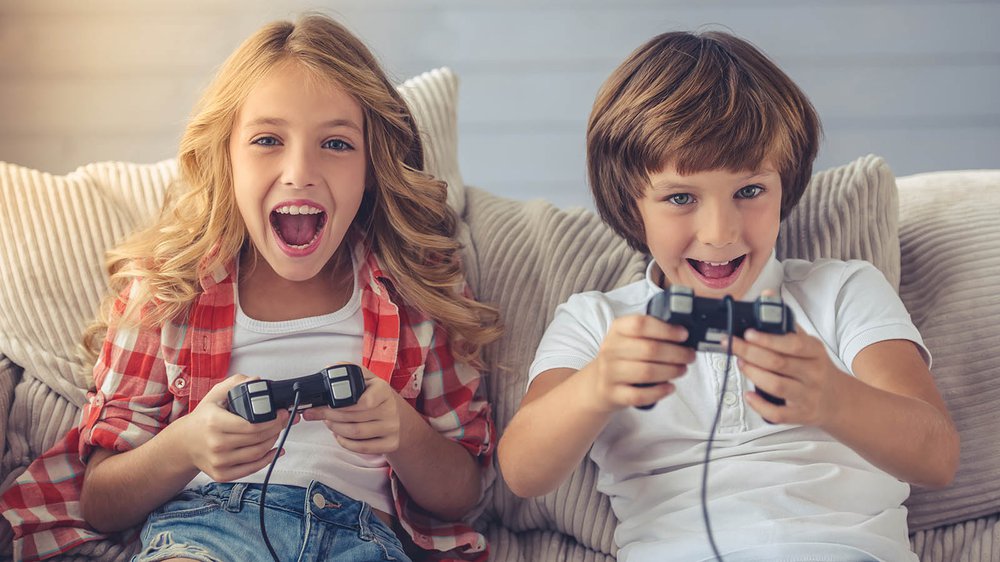As someone dedicated to the well-being of children, you know the constant struggle between screens and real life as well as I do. Like you, I have guidelines for my classes and my home about screen use. However, what I continually explore is the connection between technology and Social Emotional Learning (SEL). Please notice that I did not say EdTech. That was intentional.
Although my daughter is an avid user of her devices, mostly watching Netflix or creating TikToks, my two sons are the dedicated gamers in the family. I have had countless occasions to observe their gaming activity, and what I’ve seen is deep practice of SEL skills.
When I was in graduate school at Vanderbilt University, I studied digital learning with an emphasis on gaming for learning. Fascinated by the work of James Gee and Jane McGonigal, I explored these questions: What makes a good game? What life skills can be taught and learned in a gaming environment? How do gaming and real life intersect?
If you think about it, all of us are currently involved in several games, such as fuel points at our local grocery store and frequent flyer miles on our favorite airline. We find satisfaction and pleasure for our behaviors being rewarded in the marketplace. Although these are simple games, they are games nonetheless. Similarly, our children find joy in play.
Through games and fun, people let down their defenses and open themselves to possibilities. Remember Willie Wonka and the Chocolate Factory? Wonka’s factory is an imaginative place in which the visiting children are free to exercise their decision-making abilities, and they must live with the consequences. Video games are a constructivist-learning environment.
The constructivist environment is a balanced combination of scripting and awareness (Hesse, 2007). The scripted elements include the setting and activities within the game. There are certain places to visit and particular things to do. However, play is not restricted to a prescribed order. Players are given the opportunity to choose based on their awareness, their knowledge of situational affordances (Buder & Bodemer, 2005). This approach is similar to the Choose Your Own Adventure books. Players are co-creating the game with the designer.
The children of the 21st century are bombarded with multimodal texts, texts that include words, images and sounds. In order to interpret these multimodal texts, children need to focus on developing their higher-level thinking skills. Bloom’s Taxonomy (Revised) shows that these higher-level thinking skills include understanding, applying, analyzing, evaluating and creating (Anderson & Krathwohl, 2001). Video games give children a safe play space in which they can freely exercise their abilities to understand, apply, analyze, evaluate and create an experience.
In her book, Mind in the Making, Galinsky (2010) notes “seven essential life skills” for children in the 21st century which correspond to CASEL’s five competencies:
|
Galinsky |
CASEL |
|
Focus and self-control |
Self-Management |
|
Perspective Taking |
Social Awareness |
|
Communicating |
Self-Management, Relationship Management, Social-Awareness |
|
Making Connections |
Responsible Decision-making |
|
Critical Thinking |
Self-Awareness, Social Awareness, Responsible Decision-making |
|
Taking on challenges |
Self-Awareness, Self-Management |
|
Self-directed, engaged learning |
Self-Awareness, Self-Management, Responsible Decision-making |
As I watch my sons play multiplayer video games, I see them using the following life skills Galinsky mentions: focus and self-control, perspective taking, communicating, critical thinking, and taking on challenges. They are working with their team to solve problems so they can win the game.
In this game environment they are involved in a microcosm of the real world, a place where they have the freedom to fail. The freedom to fail is the opportunity to try new things and make mistakes, such as fall off a skateboard or lose a game of Monopoly. Children learn as much through failing as they do through winning. The freedom to experiment is the opportunity to do things differently, to take a new approach, such as building a tent with chairs and blankets instead of a table and sheet. The freedom to fashion identities is the opportunity to pretend, such as pretending to be a mommy, a doctor or a superhero. The freedom of effort is the opportunity to alternate between intense and relaxed play, such as running then stopping during a game of tag. The freedom of interpretation is the opportunity to learn individually. No two people have the same experience playing a game. These freedoms allow children to learn by doing, to be active participants in their learning experience. As Koster (2005) says, “Fun is about learning in context where there is no pressure, and that is why games matter” (98).
As caring adults, we have a vital role in helping our children make the connection between their gaming experience and real life. Having intentional conversations in which we point out how they are using their communication skills with their fellow team members or how they are more successful on their missions when they work cooperatively and then tying those lessons to their life at home and at school with family and friends can help make their learning more concrete.
About the Author

Tamara Fyke is an educator and creative entrepreneur with a passion for kids, families, and urban communities. She is the creator, author, and brand manager for Love In A Big World, which equips K-8 educators with a social-emotional learning (SEL) curriculum that is both research-based and practical, and also provides the supporting resources necessary to empower students to be socially competent, emotionally healthy problem-solvers who discover and maintain a sense of purpose and make a positive difference in the world.
Tamara is editor of Building People: Social & Emotional Learning for Kids, Schools & Communities, a book that brings 12 wide-ranging perspectives on SEL to educators, parents, and leaders. Follow her on Twitter .











